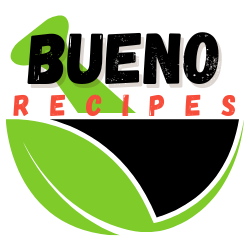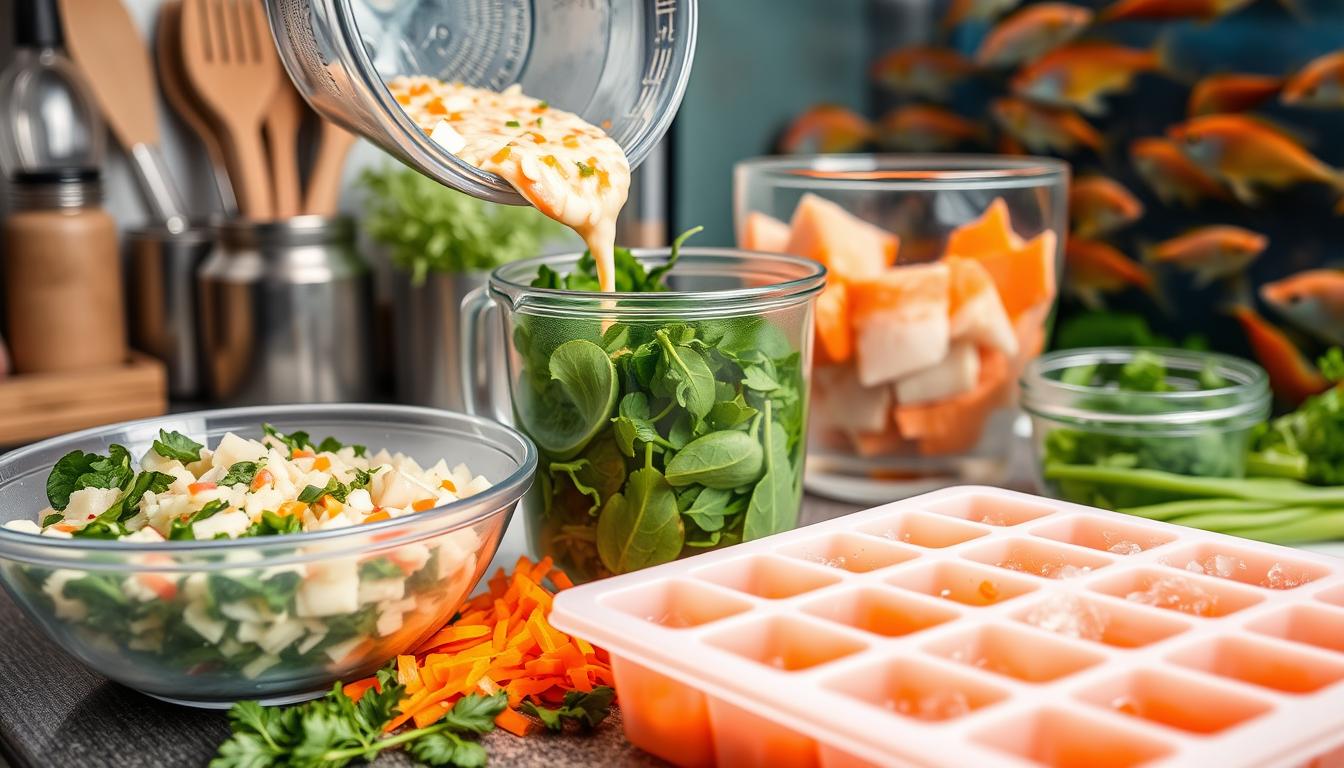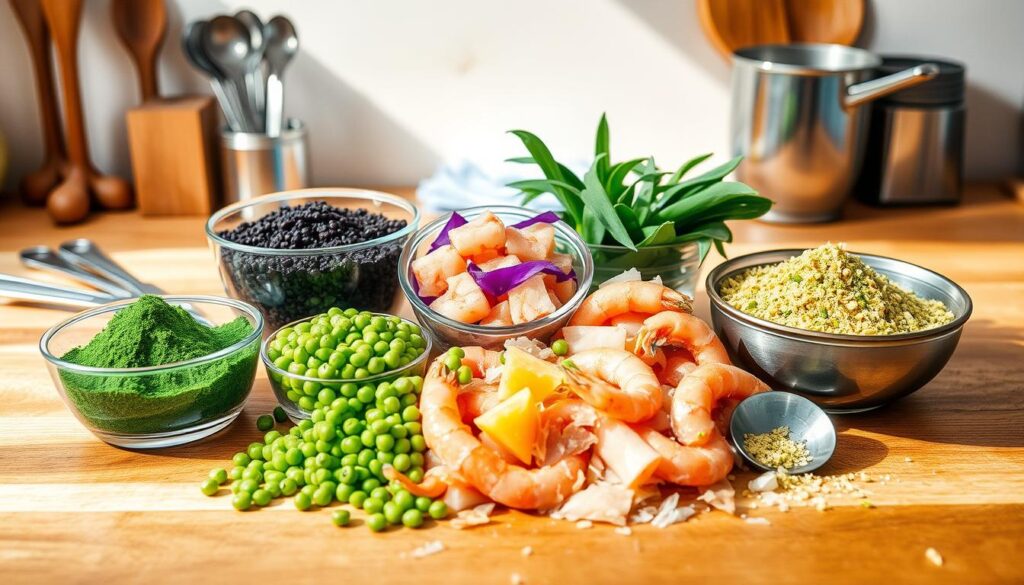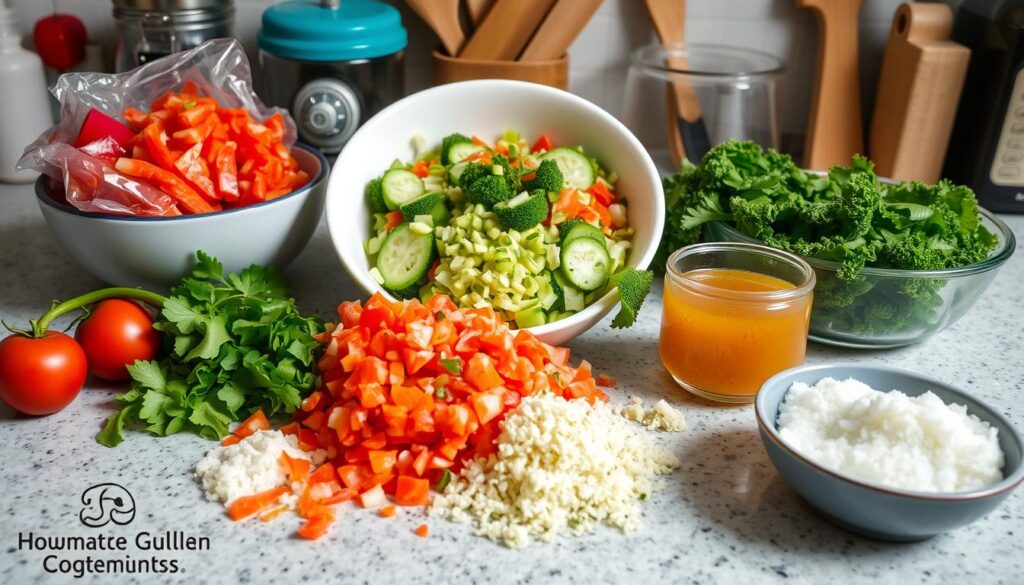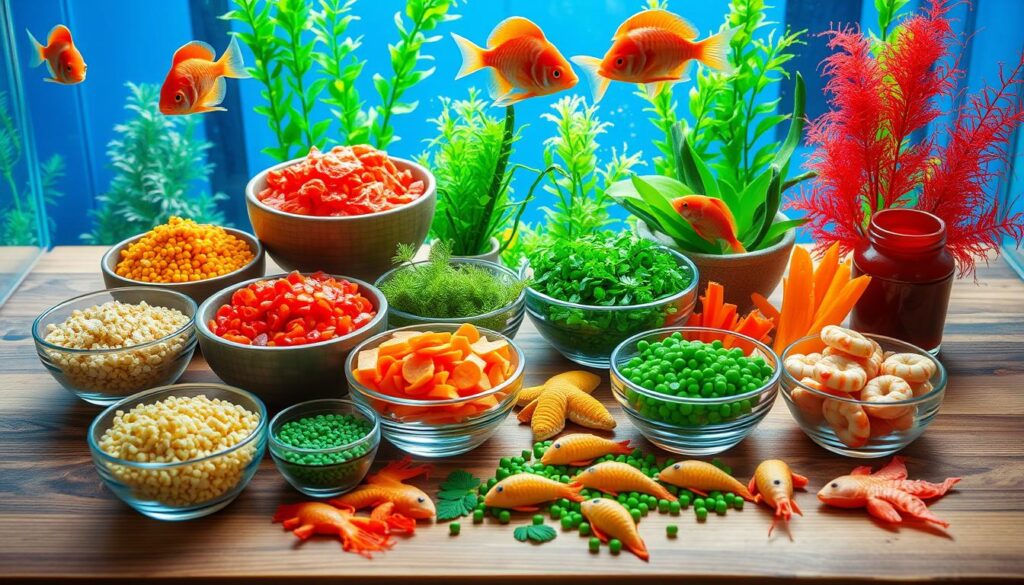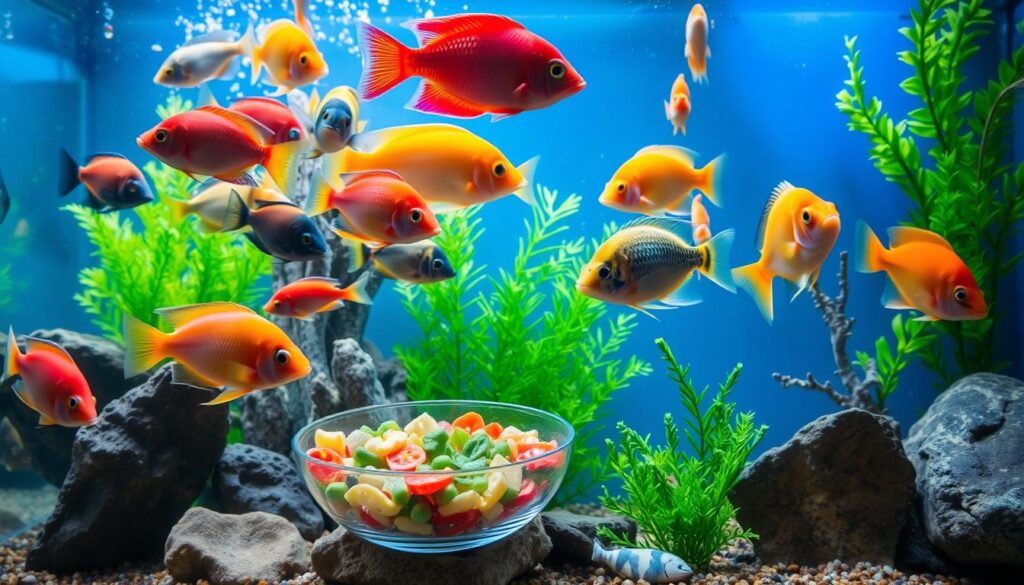My love for aquariums started years ago. I was amazed by the fish swimming in clear water. I learned that healthy fish need good food and a nice home. Making your own fish food recipe is more than a hobby. It’s a way to give your fish the best diet. You can save money and make food that fits your fish’s needs better than store-bought.
Many people think making fish food at home is hard. But it’s easy with a few ingredients and tools. You can make meals that keep your fish healthy and full of energy. This guide will show you how to make homemade fish food.
Homemade fish food is great because you can change it to fit your fish’s needs. You can avoid bad stuff in commercial foods and give your fish what they really need.
Why Homemade Fish Food is Beneficial for Your Aquarium
Making your own fish food can change how you care for your aquarium pets. Homemade food lets you control what your fish eat better than store-bought options.
Creating fish food at home is more than just feeding. It shows you care deeply about your fish’s health and happiness.
Ensures Quality Ingredients
Homemade fish food lets you know exactly what you’re feeding your fish. Commercial foods often have:
- Unnecessary fillers
- Artificial preservatives
- Low-quality protein sources
Homemade recipes, however, let you choose premium, fresh ingredients that fit your fish’s needs.
Reduces the Risk of Contaminants
“Control your ingredients, control your fish’s health”
Studies show commercial fish foods can be contaminated. Making your own food cuts down on these risks, making it safer for your fish.
Tailors Nutrition to Your Fish Species
Different fish need different foods. Homemade food lets you tailor their diet:
- Herbivorous fish need more plant-based proteins
- Carnivorous species require high-protein meals
- Omnivorous fish benefit from balanced ingredients
With homemade recipes, you can adjust the protein levels. This supports your fish’s health and the whole aquarium.
Essential Ingredients for Your Fish Food Recipe
Making homemade fish food means knowing the key ingredients. Your fish need a diet that matches their natural food. By picking the right ingredients, you can give your fish the best nutrition.
Proteins: A Key Component
Proteins are the base of fish nutrition. Different fish need different proteins, but some are good for most. Here are some top protein sources:
- Lean white fish meat
- Shrimp
- Salmon
- Beef heart
- Squid
“Proteins are essential for growth, tissue repair, and overall fish health.” – Aquarium Nutrition Experts
Vegetables: Adding Fiber and Nutrients
Vegetables add fiber and important nutrients to your fish food. Not all fish need the same vegetables. Make sure to check what your fish like.
- Spinach
- Zucchini
- Peas
- Spirulina
- Nori seaweed
Supplements: Enhancing Nutrition
Supplements can make your homemade fish food even better. They help with health and can make your fish look more vibrant.
| Supplement | Purpose | Recommended Quantity |
|---|---|---|
| Cod Liver Oil | Growth Support | 2-3% of mix |
| Spirulina Powder | Nutrient Boost | 1-2% of mix |
| Astaxanthin | Color Enhancement | 0.5-1% of mix |
| Gelatin | Binding Agent | 3-5% of mix |
Creating the perfect fish food mix depends on your fish. Always check what your fish need before making food.
Basic Fish Food Recipe for Freshwater Fish
Making your own fish food can be very rewarding. It lets you pick the best ingredients and tailor the diet for your fish. This way, you can make a healthy and affordable meal for them.
Ingredients for Your Homemade Fish Food
Choosing the right ingredients is key for a good fish food recipe. Here are the main parts for a balanced homemade fish food:
- Fresh or frozen seafood (salmon, shrimp, or silversides)
- Powdered algae supplements
- Gelatin or agar as a binding agent
- Optional vegetable supplements
Step-by-Step Preparation Process
Here’s how to make your fish food:
- Soak gelatin in cold water for 20 minutes
- Boil gelatin for 5 minutes to dissolve it fully
- Blend seafood and vegetables
- Add powdered supplements
- Spread the mix in a shallow pan
Storage and Preservation Tips
Keeping your homemade fish food fresh is important. Spread it thin, bake at 200°F for 20 minutes, then chill for an hour. Cut into small pieces and store in freezer bags.
“Homemade fish food allows you to customize nutrition specifically for your aquarium inhabitants.”
| Ingredient | Quantity | Nutritional Purpose |
|---|---|---|
| Frozen seafood mix | 1 pound | Primary protein source |
| Powdered algae | 1-2 ounces | Essential minerals |
| Gelatin | 1.5 ounces | Binding agent |
Most fish need about 75% animal protein and 25% vegetables. Adjust your recipe to fit your fish’s needs.
Variations of Fish Food Recipes for Different Species
Creating the perfect aquarium fish diet is key. You need to know what each fish species needs. Your homemade fish pellet recipe can be tailored to ensure your fish stay healthy.
When making specialized fish food, pick ingredients that match each species’ natural diet. The right mix of nutrients is crucial for your fish’s health and life span.
Herbivorous Fish Recipes
Herbivorous fish love plants. Your fish pellet recipe should include:
- Spirulina
- Blanched vegetables
- Algae wafers
- Zucchini
- Spinach
Carnivorous Fish Recipes
Protein is vital for carnivorous fish. Your aquarium fish diet should have:
- Fresh fish fillets
- Shrimp
- Beef heart
- Bloodworms
- Brine shrimp
Omnivorous Fish Recipes
Omnivorous fish need a mix of plants and proteins. Here’s a nutritional guide for your fish food recipe:
| Ingredient Category | Percentage |
|---|---|
| Fresh Seafood | 10-20% |
| Frozen Foods | 20-30% |
| Dried Aquarium Foods | 40% |
| Supplements | 2-5% |
Pro tip: Always research your specific fish species to create the most appropriate aquarium fish diet. Each species has unique nutritional requirements that can vary significantly.
“The key to a healthy aquarium is understanding and meeting the specific dietary needs of its inhabitants.”
How to Transition Your Fish to Homemade Food
Switching your aquarium fish to homemade food needs patience and planning. This change is delicate and must be done carefully. It’s important to ensure your fish stay healthy and get the nutrients they need.
Adding homemade food to your fish’s diet should be done slowly and thoughtfully. Sudden changes can stress your fish and harm their health.
Gradual Introduction Strategy
Here are the steps to follow when switching to homemade fish food:
- Begin by mixing 10% homemade food with 90% commercial food
- Gradually increase the homemade food over 2-3 weeks
- Work towards using 100% homemade food slowly
Monitoring Fish Response
Keep a close eye on your fish during the diet change:
- Watch how they eat and their appetite
- Check for any changes in waste
- Look for signs of digestive stress
“Patience is key when introducing new foods to your aquarium inhabitants.” – Experienced Aquarist
Adjusting Diet Based on Preferences
Every fish is different and has its own food needs. Here are some tips for making fish food:
- Start with small amounts of new ingredients
- Try different mixes of protein and vegetables
- Be ready to change recipes based on your fish’s reaction
Pro tip: One ice cube of homemade fish food is usually enough for a 50-gallon tank with some fish.
Common Mistakes to Avoid When Making Fish Food
Making fish food needs careful attention. Many people make mistakes that harm their fish’s health. Knowing these mistakes helps you make better fish food.
Nutritional Balance Challenges
Getting the right nutrients is key. Different fish need different foods. If you don’t meet these needs, your fish might not get enough protein, minerals, or nutrients.
- Inadequate protein intake
- Mineral deficiencies
- Incomplete nutrition
Ingredient Selection Mistakes
Not all foods are good for fish. Some veggies and additives can hurt your fish. Stay away from:
- Spinach (high oxalic acid)
- Kale and broccoli (cause tank odors)
- Unnecessary vitamin supplements
- Garlic additives
“Precision in ingredient selection is key to creating a healthy fish food recipe.”
Storage and Preservation Errors
Storing food wrong can ruin it fast. Here’s how to keep it fresh:
- Store in thin slabs for easy portioning
- Freeze immediately after preparation
- Use airtight containers
- Label with preparation date
Avoiding these mistakes helps you make a high-quality, nutritious fish meal. This meal will keep your aquarium pets healthy and full of energy.
Equipment Needed to Make Fish Food
Making your own fish treats at home is fun and saves money. You just need the right tools. Preparing fish food can be a fun and cost-effective hobby.
Creating homemade fish food needs special tools and safety steps. This ensures your fish get the best nutrition.
Essential Kitchen Tools
- Food processor or high-powered blender
- Measuring cups and spoons
- Sharp cutting board
- Mixing bowls of various sizes
- Sharp kitchen knife
Recommended Appliances
Some appliances make making fish food easier:
- Microwave for quick ingredient heating
- Small food dehydrator
- Freezer with enough space
- Digital kitchen scale for exact measurements
Safety Gear During Preparation
It’s important to protect yourself while making fish treats:
- Disposable food-grade gloves
- Clean apron
- Hair protection (like a chef’s hat or hairnet)
- Sanitized work surface
“Precision and cleanliness are key when preparing homemade fish food”
With the right tools, you can make healthy and affordable fish food. Forum data shows 18,781 users are interested in homemade fish nutrition. This shows a growing interest in DIY pet food.
Pro Tip: Invest in quality tools for safe and consistent fish food preparation.
Nutritional Needs of Popular Aquarium Fish
It’s important to know what different aquarium fish eat to keep them healthy. Each fish needs a special diet, which means we have to pay close attention to their needs.
Every fish has its own diet based on where it comes from and what it eats naturally. Giving them the right food is key to keeping them healthy and helping them grow well.
Betta Fish Dietary Requirements
Betta fish need a lot of protein in their diet. They usually eat insects and small crustaceans. To feed bettas, focus on:
- Protein-rich ingredients like shrimp and bloodworms
- Minimal plant-based content
- Small, easily digestible food portions
Goldfish Nutritional Essentials
Goldfish need a balanced diet. Their food should include:
- Lower protein levels compared to carnivorous fish
- Significant plant-based ingredients
- Vegetables like spinach and lettuce
Cichlid Specific Nutrients
Cichlids have complex dietary needs that vary by species. Some important things to consider are:
- Species-specific protein requirements
- Balanced mix of animal and plant proteins
- Supplemental vitamins to support immune function
“Knowing your fish’s specific nutritional needs is the key to maintaining a healthy and vibrant aquarium ecosystem.”
By understanding and tailoring the diet for your fish, you can make sure they get the best nutrition. This helps them stay healthy and thrive for a long time.
How Often Should You Feed Your Fish Homemade Food?
Feeding your fish homemade food is an art. It’s about finding the right balance of nutrition and how often to feed. A good diet is key to keeping your fish healthy and full of life.
General Feeding Guidelines
When making homemade fish food, timing is everything. Most fish do best with a regular feeding schedule. This helps avoid feeding too little or too much.
- Feed small portions that fish can eat in 5 minutes
- Most fish need 2-3 meals a day
- Feed no more than what fits in their eye
Signs of Overfeeding
It’s important to know when you’re feeding too much. Look out for these signs:
- Water looks cloudy
- There’s too much waste
- Food is still there after feeding
- Fish seem really tired
Adjusting Frequency for Different Species
Every fish is different, and so is their food needs. Your homemade recipe should match what your fish need to thrive.
| Fish Type | Feeding Frequency | Portion Size |
|---|---|---|
| Small Tropical Fish | 2-3 times daily | Tiny pinches |
| Larger Predatory Fish | 1-2 times daily | Moderate portions |
| Bottom Feeders | Once daily | Sinking food portions |
“Consistency is key in maintaining a healthy aquarium fish diet.” – Aquarium Nutrition Expert
Pro tip: Always watch how your fish act and adjust your food recipe as needed. Every aquarium is different!
Storing and Preserving Homemade Fish Food
Making homemade fish food needs careful storage to keep it nutritious and fresh. This ensures your fish get the best food every time.
Best Practices for Freezing
Freezing is the best way to store homemade fish food. Follow these steps to keep it fresh:
- Freeze in thin, portionable slabs for easy cutting
- Use airtight containers or freezer bags to prevent freezer burn
- Label containers with preparation date
- Shake containers after 2 hours of freezing to prevent cube clustering
Containers for Long-term Storage
Choosing the right container is key for keeping your fish food quality high. Glass or hard plastic containers with tight lids are best.
Shelf Life of Homemade Fish Food
Your homemade fish food can last months if stored right. Here’s a quick guide:
| Storage Method | Estimated Shelf Life |
|---|---|
| Refrigerated | 3-5 days |
| Frozen | 2-3 months |
“Proper storage is key to maintaining the nutritional integrity of your homemade fish food.” – Aquarium Nutrition Expert
Always thaw only what you need for each meal. This keeps your homemade fish food recipe fresh and full of nutrients.
Final Thoughts on Homemade Fish Food Preparation
Making the perfect fish food recipe takes patience, creativity, and a love for fishkeeping. Starting your homemade fish food journey can greatly improve your fish’s health. By learning about each fish’s nutritional needs, you can make better food than store-bought options.
Encouraging Experimentation
Start exploring fish food recipes with an open mind. Try using raw squid, spurlina powder, and shrimp for nutritious meals. With 4K views on homemade fish food, you’re joining a community eager for custom nutrition. Your kitchen can become a place to create the best diets for your fish, boosting their color, breeding, and activity.
Keeping Your Fish Healthy and Happy
It’s important to watch how your fish react to homemade food. A mix of hikari cichlid pellets, blood worms, and your recipes can greatly improve their health. Different fish like guppies and swordtails need specific proteins. Using organic ingredients and careful preparation ensures your meals are full of minerals and vitamins, unlike commercial foods.
Connecting with the Fishkeeping Community
Share your fish food recipe finds with other aquarium lovers. The 12 people talking about homemade food show the community’s teamwork. While there are commercial options like Mazuri Aquatic Gel Diet, your homemade food can make a big difference. By learning from others and sharing your own, you’ll get better at making the best food for your fish.
FAQ
Is homemade fish food better than store-bought options?
Homemade fish food is often better. It lets you pick the best ingredients and tailor the diet to your fish. You can also avoid harmful additives found in some store-bought foods.
What are the essential ingredients for homemade fish food?
You’ll need protein sources like canned salmon or shrimp. Add vegetables like peas and zucchini. Supplements like spirulina or chlorella powder are also important. Gelatin helps bind the ingredients together.
How do I store homemade fish food?
Freeze the food in thin slabs in freezer-safe bags or containers. Label them with the date. This way, it lasts months. Only thaw what you need each time to keep it fresh.
How often should I feed my fish homemade food?
Feed your fish just enough for them to eat in 5 minutes. The frequency depends on the fish type and tank conditions. Some need small meals often, while others eat less frequently. Watch your fish to avoid overfeeding.
Can I make fish food for different types of fish?
Yes! You can make different recipes for different fish. Herbivores need more plants, while carnivores need meat. Omnivores get a mix of both. Tailor the recipe to your fish’s needs.
Are there ingredients I should avoid in homemade fish food?
Stay away from spinach and other high-oxalic acid greens. Also, avoid kale, broccoli, cauliflower, and cabbage. Garlic is not good either. Focus on a balanced diet that meets your fish’s natural needs.
What equipment do I need to make homemade fish food?
You’ll need a food processor or blender, freezer-safe containers, and a stove or microwave. Safety gloves are a good idea when handling raw ingredients. For big batches, get bigger mixing bowls and containers.
How do I introduce homemade food to my fish?
Start by mixing a little homemade food with their usual diet. Slowly increase the homemade food amount. Watch how they react to the new food to make sure they’re okay.
